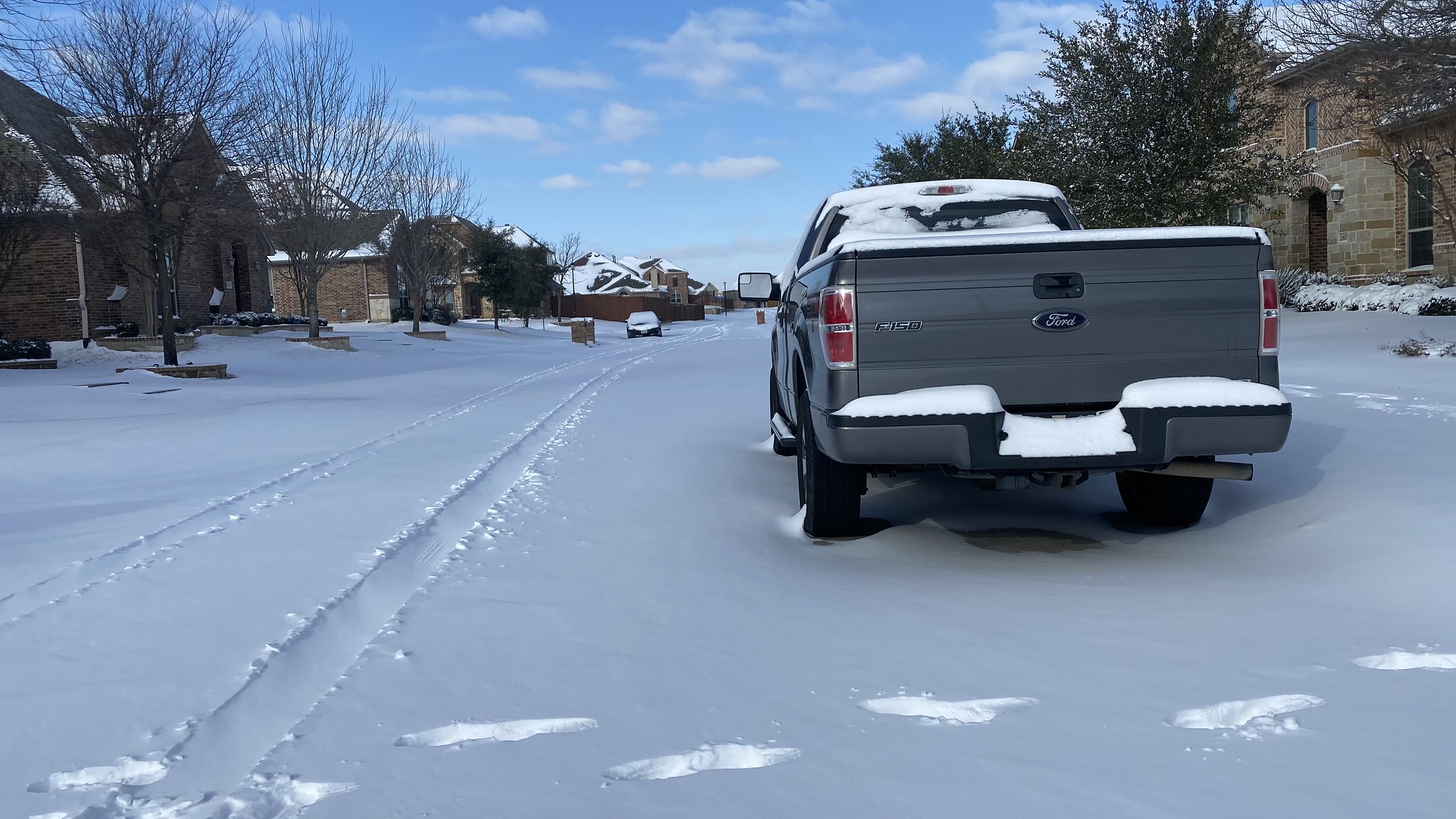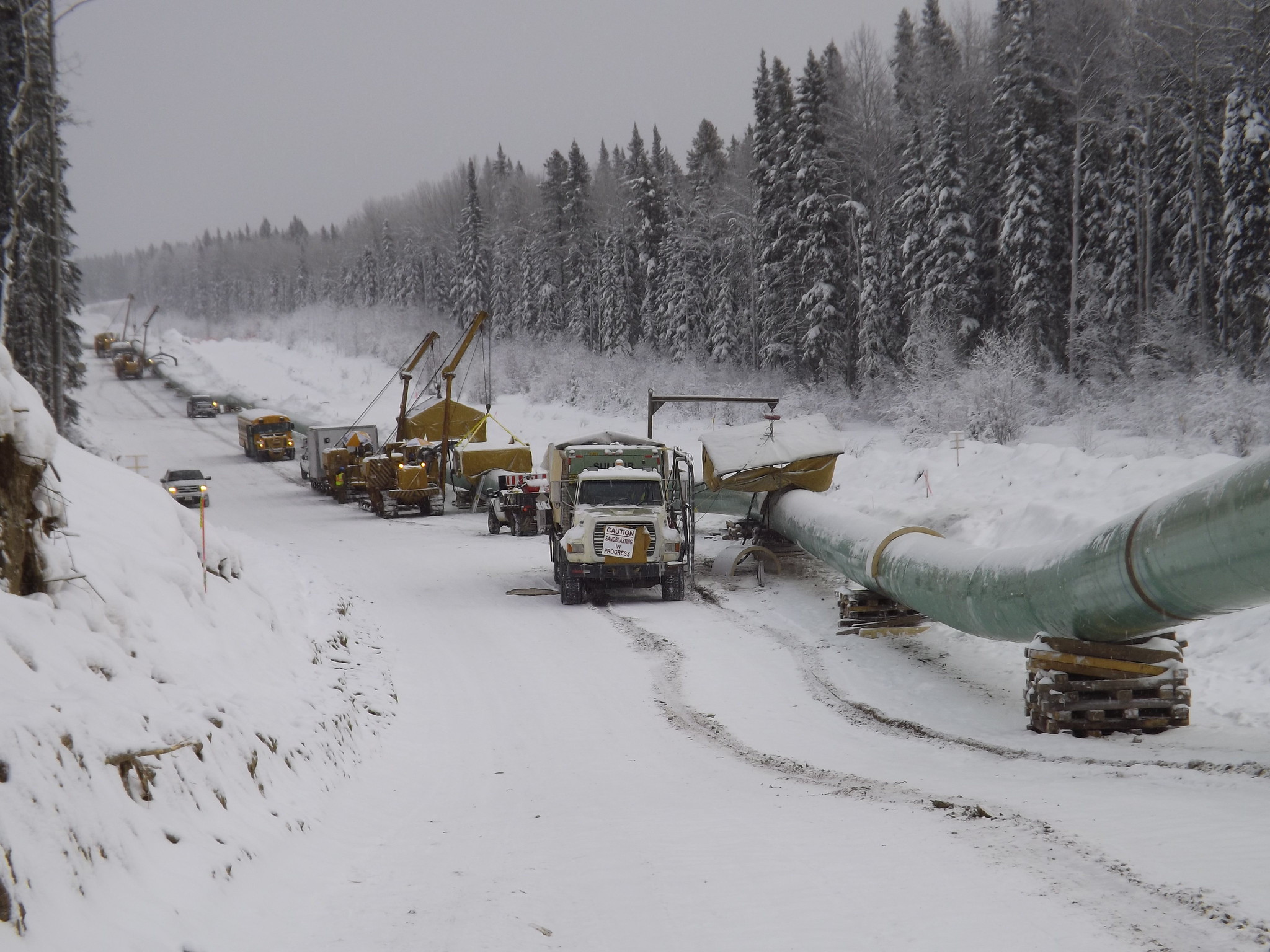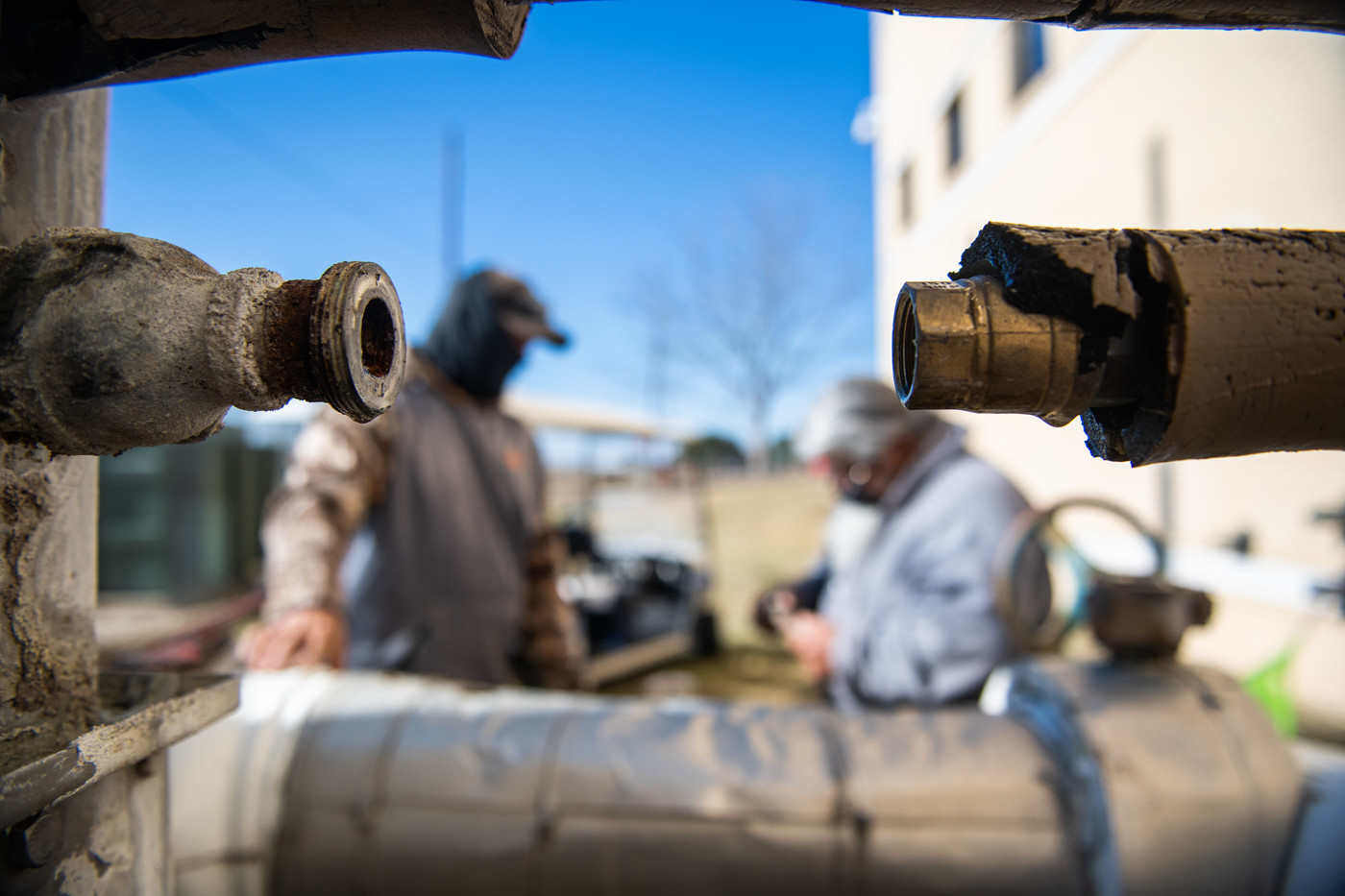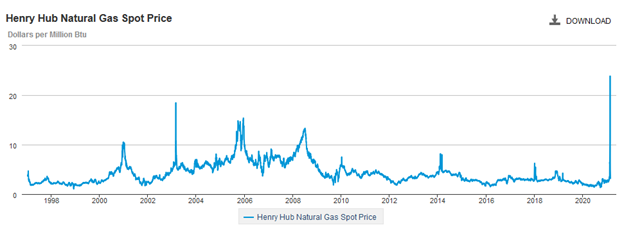As temperatures across Texas plunged in mid-February, memes showing frozen wind turbines — some including misleading photos from Europe in 2015 — spread rapidly on social media. Politicians like former Texas governor Rick Perry and current governor Greg Abbott were quick to (incorrectly) claim that renewables were to blame for the state’s extraordinary power failures.
Those false claims were rapidly called out, rebutted not just by backers of renewable energy but also by Texas’ own power grid operators, who revealed that wind turbines were among the least of the Lone Star State’s problems. Other politicians made headlines for absurdly blaming the “Green New Deal” — a sweeping proposal to rapidly decarbonize the economy that neither Texas nor the U.S. has yet adopted.
But while debates surged over renewables, what was lost in the fray was what Texas’ catastrophe reveals about natural gas, now the nation’s primary source of electrical power and a fuel widely marketed as a more reliable backstop to fluctuating wind and solar power. Events in Texas revealed ways gas supply chains can freeze up when cold weather strikes — raising questions about the fuel’s reliability under tough conditions.
Despite an onslaught of drilling and fracking that kept natural gas prices mostly pinned to historic lows in recent years, federal officials warned in 2015 that cold weather could still bring wild price swings as gas displaced coal — even in places far more prepared for freezing temperatures than Texas. Those warnings were largely ignored as the Trump administration swept into office — and the department that issued them was dismantled.
Out of Gas
While all of Texas’ fuel sources suffered from February’s unusual cold, gas most conspicuously dried up last week, too often failing to reach burner tips when heat and energy were most needed.
Gas production in Texas plunged 45 percent the week of February 14, according to data from the Energy Information Administration (EIA), slashing total nationwide production by 20 percent. Meanwhile, the Electric Reliability Council of Texas (ERCOT), the state’s grid operator, revealed on February 24 that the state’s power grid came within four minutes and 37 seconds of total failure — which could have left Texans without electricity for weeks or months.
The problems, in other words, weren’t limited to Texas’ natural gas power plants which, like its coal, wind, solar, and nuclear-fueled plants, suffered disruptions many linked to the state’s failure to require that power plants winterize. The problems with gas stretched all along the supply chain, through the pipelines, and back to the wells themselves.
It’s well known within the industry that methane gas wells and pipelines can be frozen shut by cold weather. This means less gas is able to get to power plants or into people’s home heaters, creating a shortage in supply.
When demand spikes and gas shortages hit in the same regions, prices spike, contributing to gas’ reputation for wild price swings. The mismatch between supply and demand can even, as heavily gas-dependent Texas found, contribute to energy shortfalls so severe they can threaten an unprepared power grid.

Winter storm Uri hits North Texas, by Bk1bennett, via Flickr.
The Department of Energy (DOE) warned of potential problems in its Quadrennial report back in 2015, stating there was a “high probability of significant short-term price spikes” in cold weather due to freezing gas wells. More research was needed, DOE said, to understand how significant price spikes might be — but the Trump administration later discontinued that report and dismantled the office that produced it. The more detailed analysis DOE called for was never done, even as the nation grew increasingly reliant on gas-generated power.
While state investigations continue into just how Texas’ energy grid wound up so close to the brink recently, climate scientists predict that extreme weather will become more common as the climate warms and changes — putting every element of people’s lives under more stress.
The recent freeze and the cascading utility failures in Texas are believed to have caused roughly 80 deaths, with experts warning that it may be weeks or months before the final toll is known.
“Some community members have not had power or water since Valentine’s Day, and others lost these lifelines in the days following,” said Juan Parras, a Texas Environmental Justice Advocacy Services (TEJAS) organizer. “Our community members suffer immensely under these extreme weather conditions.”
Iced In
At first glance, you might think it’d be nearly impossible for natural gas supplies to freeze off from a bit of cold weather. Natural gas is mostly methane, a molecule so resistant to reaching liquid form that it requires massive industrial plants to chill it into liquefied natural gas (LNG). It takes temperatures below -297 degrees Fahrenheit to freeze natural gas — temperatures more likely found in outer space than on Earth.
But what flows up from a gas well is never pure methane — it’s a blend that can also include propane, butane, crude oil, chemicals, salts, radioactive elements, and water.
A quirk of chemistry makes that blend a perfect recipe for gas pipes to ice shut. When water meets with methane at low temperatures and high pressure, the two can form into gas hydrates — tiny crystals in which water molecules trap lots of methane. Those hydrates are commonly found in cold places — think permafrost or ocean floors.
When hydrates form inside gas pipes, their diamond-like shapes let them jam into each other and lock up in dense formations. In practice, energy market consultancy RBN Energy explains, that means hydrates are “much harder to melt or dissolve than everyday ice-from-water.”
Freezing is so effective at clogging up gas pipes that one Houston-based company, Wild Well Control, offers to deliberately freeze-up problem wellheads so repairs can be performed.
Freeze-offs played a major role in taking out gas production in Texas. “When we think about what’s been going on in the last week and why it’s turned the market completely on its head, is the fact that the freeze-offs are occurring in Texas,” Erika Coombs, director of oil & gas products at research firm BTU Analytics, told The Verge recently.
“An Economic Decision”
To be sure, hydrates at gas wells weren’t the only problem that caused gas production in Texas to plunge last week; gas system instrumentation often runs on the same power grid as everyone else, making wells and compressor stations vulnerable to power outages. Hydraulic valves on pipes can freeze and become stuck, triggering automatic shutdowns. Sometimes the gas blend itself contributes —- so-called “wet gas,” carries lots of natural gas liquids like propane, ethane, and butane, each with their own freezing points, making wet gas more prone to freezing than “dry gas” wells that produce more methane.
In 2019, Texas got roughly half of its electrical power from gas-fired plants. Fossil fuel and nuclear plants spin steam turbines — meaning that they need liquid water to heat into steam. Texas’ power plants more often are designed to shed the heat created by steam generation in the state’s sweltering summers, instead of keeping warmth inside to make sure water supplies don’t turn to ice — adding another layer of complexity to designing steam-based plants that can run in both extreme hot and extreme cold.
Cold weather freeze-offs can be somewhat avoided if companies plan in advance — they can inject chemicals that serve as antifreeze or design pipes in ways that make it harder for hydrates to form — but if it’s cold enough for long enough, the usual tactics can start to fail, even in systems that are reasonably well winterized.

Pipeline construction in the snow in Canada.Credit: James Woodhead, via Flickr.
And if you’re going to try just heating frozen gas pipes, it’s wise to proceed with caution. “It’s bad form to fire up an acetylene torch near a nat[ural] gas gathering system,” one Tudor, Pickering & Holt analyst told Forbes in 2010 during a freeze-off that year.
The costs of preventing freeze-offs can add up. It runs over $34,000 to winterize a single gas well, with an additional $6,800 each year in operating costs, the Gas Technology Institute estimated in 2011.
“Freeze-offs have always happened,” said Randall Collum, Jr., Wood Mackenzie’s vice president for short term gas. “In Wyoming, we knew we were going to deal with that cold every year so we planned for it and winterized; in areas like Texas, Louisiana, it’s just not worth the investment if it’s only going to be impacted every five or ten years.”
“It’s definitely an economic decision,” he added.
“Just When It Is Most Needed”
Experts point, in part, to ways that the gas market nationwide has changed over the past decade as a reason that freeze-offs have become more significant in recent years.
“Since the advent of the Shale Revolution, two trends have increased the magnitude of freeze-offs,” RBN Energy explained. First, many drillers have sought out “wet gas,” in part because it’s better for making plastic — a product the oil and gas industry has touted as a major part of its future in a low-carbon world. And second, while historically U.S. gas mostly came from the Gulf Coast, shale gas often comes from colder places like Appalachia where freeze-offs are more likely. In 2019, for example, Pennsylvania produced nearly as much gas as Texas — despite a Pittsburgh-area freeze-off in January that temporarily caused production to drop 1.5 billion cubic feet a day (Bcf/d).
Recent years have seen freeze-off records repeatedly toppled. A 2018 freeze knocked out roughly 5 Bcf/d, or roughly 7 percent of U.S. production, Wood Mackenzie reported that year. “This figure shattered the previous single-day record,” of roughly 5 percent of U.S. production, they added, “set during Winter 2013-2014.”
Just before catastrophe struck Texas this year, a smaller freeze-off had already shaved off roughly 2 percent of gas production from Appalachia’s Marcellus and Utica shale regions.
“As residential-commercial end-users dial up their furnaces, lifting gas demand toward seasonal highs, more wellhead freeze-offs could stymie regional production,” S&P Global reported on February 5, “just when it is most needed.”
Prices Spike
Things start to get dire for gas consumers when cold weather spreads into densely populated areas and gas-producing regions at the same time.
February 14 and 15 set the record for the highest two-day natural gas demand in U.S. history, an American Gas Association official told the Associated Press. Cold weather spread across virtually the entire U.S., and sub-zero temperatures were reported in over a dozen states.
At the same time, freeze-offs and other cold-related problems wiped out roughly 20 percent of U.S. gas production — even while some operators raced to open the taps to long-inactive gas wells.
Freeze-offs and power outages are creating a vicious cycle of operational challenges for #Permian producers and pipeline operators. How long could it take to resolve? More in today’s blog. https://t.co/rdIlo5pK5J#natgas #oott
— RBN Energy (@RBNEnergy) February 17, 2021
With demand for gas surging outside Texas as well, the week ending February 19 also saw the second-largest drawdown of natural gas from storage in U.S. history, EIA data shows, totaling 338 billion cubic feet.
Natural gas prices in turn rocketed. At the beginning of February, one thousand cubic feet (1 mcf) sold for $4.19 at the ONEOK gas hub in Oklahoma. Last week, prices there briefly hit $999. Prices also flew up in places like Kansas and Minnesota.
Texans have already begun reporting shattering utility bills.
“My savings is gone,” Scott Willoughby, a 63-year-old Army veteran whose monthly bill came to $16,752, told The New York Times (drawing a scoffing dismissal from the state’s Lt. Governor, who argued that customers “need to read the fine print in those kinds of bills.”)
But, while Texas’ deregulated power market may have left individual consumers more exposed to wild price fluctuations, the price spikes also reflect purchasing decisions made by gas and power companies that can be far outside the control of individual consumers.
Posts on social media circulated warnings to people already cash-strapped amid the pandemic: “take your electric bills off auto-pay,” one tweet with over 200,000 likes advised.
“My billing cycle just started this week and it’s already 8 TIMES my normal payment with 25 days left to go,” the post continued. “I sat in the dark and barely used my heat.”
DOE Warnings
At the time of publication, a spokesperson for the Independent Petroleum Association of America (IPAA), a trade group representing gas producers, had not responded to questions from DeSmog about price spikes or the reliability of gas production in cold weather.
In 2019, the National Gas Council, which counts the IPAA as one of its members, produced a report touting the reliability of the gas network in extreme weather. “The operational characteristics of the natural gas transportation network, in combination with the physical properties of natural gas, effectively minimize the likelihood and severity of service disruptions,” the trade groups’ report concluded. “In the rare event of a disruption, impacts are typically localized and brief. History demonstrates that disruption of firm pipeline transportation and/or storage services resulting from severe weather events are extremely rare.”
Earlier, federal officials had predicted that gas’ vulnerability to freezing could cause major headaches.
“Since 2008, freeze-offs have contributed to initial daily disruptions as much as all but the largest hurricanes,” the Department of Energy’s Office of Energy Policy and Systems Analysis wrote in its Quadrennial Energy Review in 2015.
That report describes DOE modeling which looked at what would happen if a month-long freeze-off struck in the Marcellus, sealing off 10 percent of U.S. gas production. That sort of freeze, they predicted, “would not result in catastrophic gas delivery disruptions” — but there could still be significant consequences.
“The model did not capture the high probability of significant short-term price spikes,” DOE wrote, “nor did the model include institutional barriers that could prevent the region-to-region gas transfers that reduce the severity of gas shortages and associated high gas (and electricity) prices.”
In many ways, it was a prescient warning: price spikes have indeed proved “significant” and Texas’ pipelines — and the contracts controlling gas flows — are largely designed to transport gas out of the state, not into it. “That’s because [Texas pipelines] were built to ‘telescope’ in the wrong direction for today’s market — they were originally designed to take on increasing amounts of gas supply as they moved northeast toward Louisiana,” RNB explains, “so the pipeline diameter and, thus, capacity gets smaller the farther south they go.”
In January 2017, as Trump took office, the DOE published an update to its 2015 report, specifically warning that a changing climate was putting the grid at risk. “The leading cause of power outages in the United States is extreme weather, including heat waves, blizzards, thunderstorms, and hurricanes,” it noted. “Events with severe consequences are becoming more frequent and intense due to climate change, and these events have been the principal contributors to an observed increase in the frequency and duration of power outages in the United States.”
Later that year, then-Energy Secretary Rick Perry announced he was reorganizing the DOE in ways he said would “support American energy dominance.” The Office of Energy Policy and Systems Analysis, which produced the report, was shunted to the sidelines, replaced with an office staffed by Perry.
The further study called for in the 2015 report was never conducted, even as gas surpassed coal to become, for the first time, the nation’s primary fuel for electrical generation.
Springing Leaks
On Friday, February 19, as temperatures in Arlington, Texas, hovered in the mid-20s, Jaya Davis woke up at 6:45 a.m. to an unusual loud noise.
“It sounded like a jet-engine sound,” she told DeSmog, adding that if the weather wasn’t so cold she’d have guessed maybe a tornado — yet another disruption added to all the problems winter weather had brought. “It was kind of one of those things like, ‘oh what is happening now?’”
Roughly two miles away, across a lake, an Energy Transfer pipeline was invisibly — but loudly — spewing out gases. With no communication from local police or company officials about what happened, neighbors had to hunt to find out what was causing the noise, Davis said.
“The release was due to icing in the control/supply lines to the regulation valves, causing the regulator to open causing a high pressure event,” ETC Texas Pipeline later reported to Texas regulators, “and the relief valve did as designed and released gas to protect downstream equipment.”
It was one of hundreds of reported releases of air pollutants and carcinogens in Texas during the freeze. In the two hours it took to stop the venting, that one valve released over 60,000 pounds of volatile organic compounds (VOCs), the company told regulators — about the same amount of hazardous air pollution that, on average, each of the five largest Gulf Coast refineries also reported releasing during the freeze.
While millions of Texans struggled with no power and no heat, the gas systems around them were spewing out often-invisible pollutants, in some cases because they’re designed to vent off gases when systems freeze up to prevent explosions or equipment damage.
And as too many Texans now know too well, frozen pipes that carry water can burst — which spells trouble not only inside unheated homes, but also potentially at the state’s gas well pads. “There’s a good bit of water produced with oil and gas, so in areas with higher water, you’re going to have burst pipes,” Jim Newman, Executive VP of Operations at Basic Energy Services, told Bloomberg News recently.
“Freezes cause failures throughout the fragile supply chain,” Sharon Wilson, senior field advocate for the environmental group Earthworks, which has spent years tracking air pollution from the oil and gas industry in Texas, told DeSmog. “Typically we only find out about the ones at refineries because they are big and near population centers.”
And that means that freeze-offs not only cause price spikes or grid problems, they also have implications for people’s health and for the climate. Many of the pollutants from gas wells are carcinogenic or toxic, and methane is an extremely powerful greenhouse gas, capable of warming the climate more rapidly than carbon dioxide. Methane leaks and venting are a major contributor to the greenhouse gas emissions that have been warming the climate.
Meanwhile, climate scientists warn that what lies ahead for all of us isn’t simply “global warming,” it’s what some call global weirding.
“We are headed into more extreme weather in general,” climate scientist Katharine Hayhoe told CNN recently, listing examples such as heatwaves, floods, hurricanes, wildfires, and even snowstorms. And that means that what was enough to keep the lights on in the past may no longer be adequate.
“We have designed our infrastructure, our building codes, our energy supply, our water allocations, we have designed almost every aspect of our lives based on conditions that we experienced in the past,” Hayhoe added, comparing it to driving down a highway using only the rearview mirror to navigate — while a major curve lies ahead.
Main Image: The severe winter storm lasting over five days damaged pipes, Feb. 19, 2021, at Joint Base San Antonio-Lackland, Texas. U.S. Air Force photo by Sarayuth Pinthong, via FlickrSubscribe to our newsletter
Stay up to date with DeSmog news and alerts








